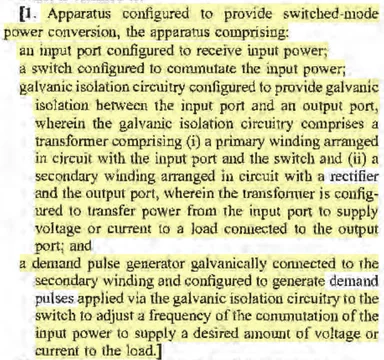
Years ago, I wrote a really terrible first draft of a summary judgment brief arguing invalidity of a patent for obviousness.
I wrote it immediately after expert reports, and my draft failed to actually say why the claims were obvious. Instead, the whole draft read like a sur-rebuttal to the patentee's expert: here is why their first argument doesn't work, here is why their second argument doesn't work, and so on. Never "here is why the claims are obvious."
To me, at the time, it looked great. I rebutted all of their arguments! How can we lose! To others, it was gibberish.
Luckily, another team member read it and pointed out that, to someone who hadn't spent the last two months neck-deep in this stuff, the whole brief was practically unintelligible. We re-wrote it from scratch and all was well.
You Can't Just Open With Rebuttal
I can't say for sure, but I imagine something similar may have happened to the defendant in Koninklijke Philips N.V. v. Telit IOT Solutions, Inc., C.A. No. 20-1708-CFC (D. Del. Nov. 16, 2023). Except, of course, nobody came to their rescue.
Instead, the brief went to the Court like that, and Chief Judge Connolly was not amused:
Pending before me is Telit's Motion for Summary Judgment of Patent Unenforceability. . . . Telit says in its motion that "[t]he grounds for this Motion are set forth in Telit's Opening Brief in support of this Motion," D.I. 154, but the grounds for the motion are not readily apparent from the Opening Brief. At no point in the Opening Brief does Telit state in a single sentence or paragraph (let alone a sentence or paragraph at the outset of the brief) why it is entitled to summary judgment of patent unenforceability as a matter of law. Instead, Telit devotes its brief to attacking what it calls "Philips' argument," and asks me to infer from that attack a legal theory that would entitle Telit as a matter of law to a judgment that the asserted patents are unenforceable.
Id. at 1-2. The Court did not flat-out deny the motion. Instead, it resorted to the answering brief to try to determine what defendants' theory was:
In its Answering Brief, Philips describes Telit's motion as a "motion for summary judgment of implied waiver." D.I. 179 at 1. Telit does not dispute that characterization in its Reply Brief. . . . Implied waiver occurs when the patentee's "conduct was so inconsistent with an intent to enforce its rights as to induce a reasonable belief that such right has been relinquished." . . . "Such conduct can be shown where (1) the patentee had a duty of disclosure to the standard setting organization, and (2) the patentee breached that duty."
Id. at 2. The Court set up the argument based on that theory and explained that it fails, because the defendant failed to lay out one of the claim elements:
Telit has a heading in its Opening Brief that reads: "Philips Inequitably Benefitted from its Delay." . . . Under that heading, Telit cites two district court opinions in which courts found that "IPR owners inequitably benefit[ted] from their late disclosures." . . . Telit, however, cites nothing in the record that shows that Philips' alleged misconduct resulted in an unfair benefit. That failure dooms its motion. . . . NOW THEREFORE, at Wilmington on this Sixteenth day of November in 2023, Telit IoT Solutions, Inc.'s Motion for Summary Judgment (D.I. 154) is DENIED.
Id. at 2-3.
Looking at the brief (attached below), I have to agree. Neither the "summary of the argument" section nor the substantive argument sections really lay out what the basic theory is supposed to be.
As best I can tell from a quick review, it looks like they claim the patentee was subject to rules from a standards-setting organization that required it to disclose its patents, and it didn't. The standards-setting organization then adopted infringing technologies as standards, and as a result the patentee's patents should be unenforceable as applied to the standards. But I'm not certain.
It's often said—and true, in my opinion—that D. Del. judges have seen all kinds of patent cases and may not necessarily benefit from long recitations of basic standards. But you still need to explain how your facts fit into the standards and entitle you to relief.
That's Not How a Concise Statement of Facts Is Supposed to Work
Part of what happened here seems to be that the defendant stuffed what should have been their brief's statement of facts into their separately-filed "concise statement of facts." Their brief then assumes the reader read that first.
Their concise statement sets forth the background that the reader needs to make sense of the brief. It explains what the standards-setting group is and sets forth the patentee's relationship with it. It also defines some terms used without explanation in the brief, like "ETSI" and "IPR" (p.s., in this brief, IPR means means "intellectual property rights", not "inter partes review"). I have to say, after reading their concise statement, the brief makes a lot more sense.
But Chief Judge Connolly's scheduling order does not permit the "concise statement of facts" to be used this way. The concise statement should contain only the bare minimum facts needed to win the motion, so that the Court can determine if there is a dispute of fact:
When preparing the separate concise statement, a party shall reference only the material facts that are absolutely necessary for the Court to determine the limited issues presented in the motion for summary judgment (and no others) . . .
Id., D.I. 82 at 17.
This is a common confusion, and it can have consequences. The Court has denied motions when a party puts a non-material but disputed fact in their concise statement. It's really a separate document, not a way to expand the page limits of a brief.
If you need facts to make sense of your brief, those facts should be stated in your brief in addition to going into the concise statement. And an SJ brief will normally contain facts that are not in the concise statement, since they are not "absolutely necessary" for the Court to resolve the motion. Don't fall into the trap of just cut-and-pasting your "statement of facts" into the separate "concise statement of facts"!
If you enjoyed this post, consider subscribing to receive free e-mail updates about new posts.




